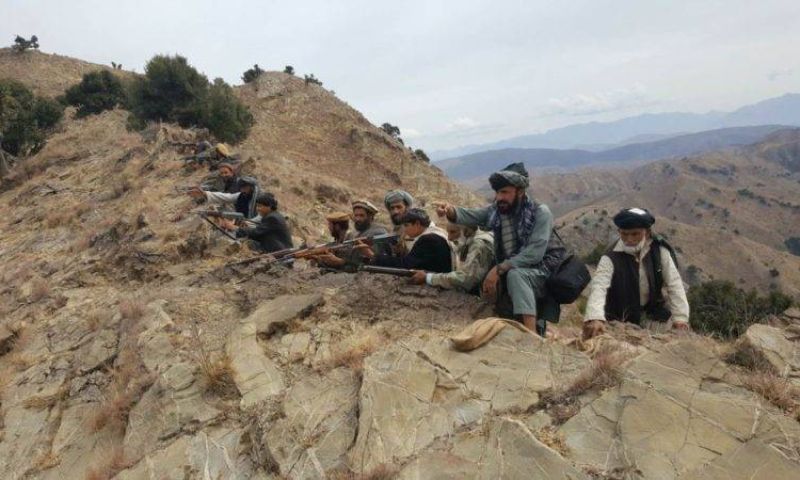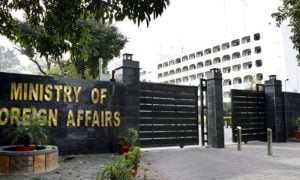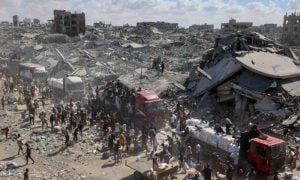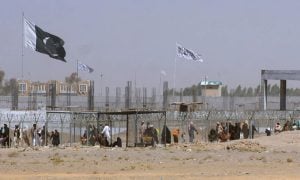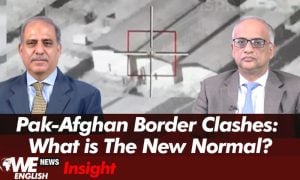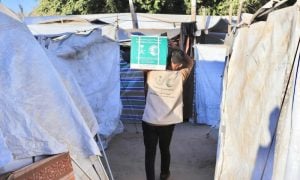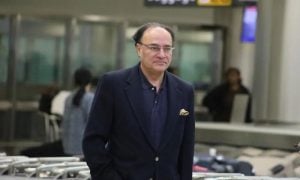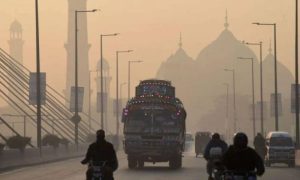PESHAWAR: At around 1100 hours, a convoy of 64 truckloads, carrying food and essential daily-use items to the blockaded Parachinar town in Upper Kurram, departed from Thal on February 17 this year.
After covering approximately 25 kilometres distance, the convoy—escorted by police and Frontier Corps (FC) personnel—ran into a hail of bullets in the Ochat area in Lower Kurram where it came under a heavy armed attack from both sides.
The exchange of fire between FC personnel and the assailants lasted for over half an hour. During this time, the security personnel, accompanying the convoy, contacted the Frontier Corps base in Thal for reinforcements. However, the reinforcement force was also caught in the crossfire at Mandori in Lower Kurram.
Giving an eyewitness account, a police officer stationed in Lower Kurram says, “In both attacks, five FC personnel and a truck driver were killed. Later, heavy weapons were used in the exchange of fire.”
This was not the first such attack in the area.

On November 21 last year, a convoy heading to Parachinar was also ambushed in the Ochat area, resulting in the death of 44 people. The situation spiralled out of control for the next 10 days. By November 30, sectarian clashes between Shia and Sunni groups in Upper and Lower Kurram left a trail of destruction, claiming a total of 138 lives.
A peace deal on shaky ground
In an attempt to restore peace, the government brokered a ceasefire and initiated negotiations between the warring factions. This led to the signing of a 14-point peace agreement in Kohat on January 1, 2025, with 45 Shia and 39 Sunni representatives signing the document.
Clause 5 of the agreement acknowledges that the presence of heavy weaponry in Kurram resulted in significant loss of life. The warring tribesmen not only used these weapons against each other but also against security forces and government institutions.
The agreement imposed a ban on the display and trade of weapons, and both factions were given a two-week deadline—ending on January 15, 2025—to devise a disarmament plan. Additionally, the agreement laid the groundwork for reopening the Thal-Parachinar Road, which was closed due to security threats since the second week of October 2024.
However, just days after the agreement Kurram Deputy Commissioner Javedullah Mehsud had a brush with death when he was ambushed in the Bagan area of Lower Kurram on January 4. He was travelling from Parachinar to Thal.
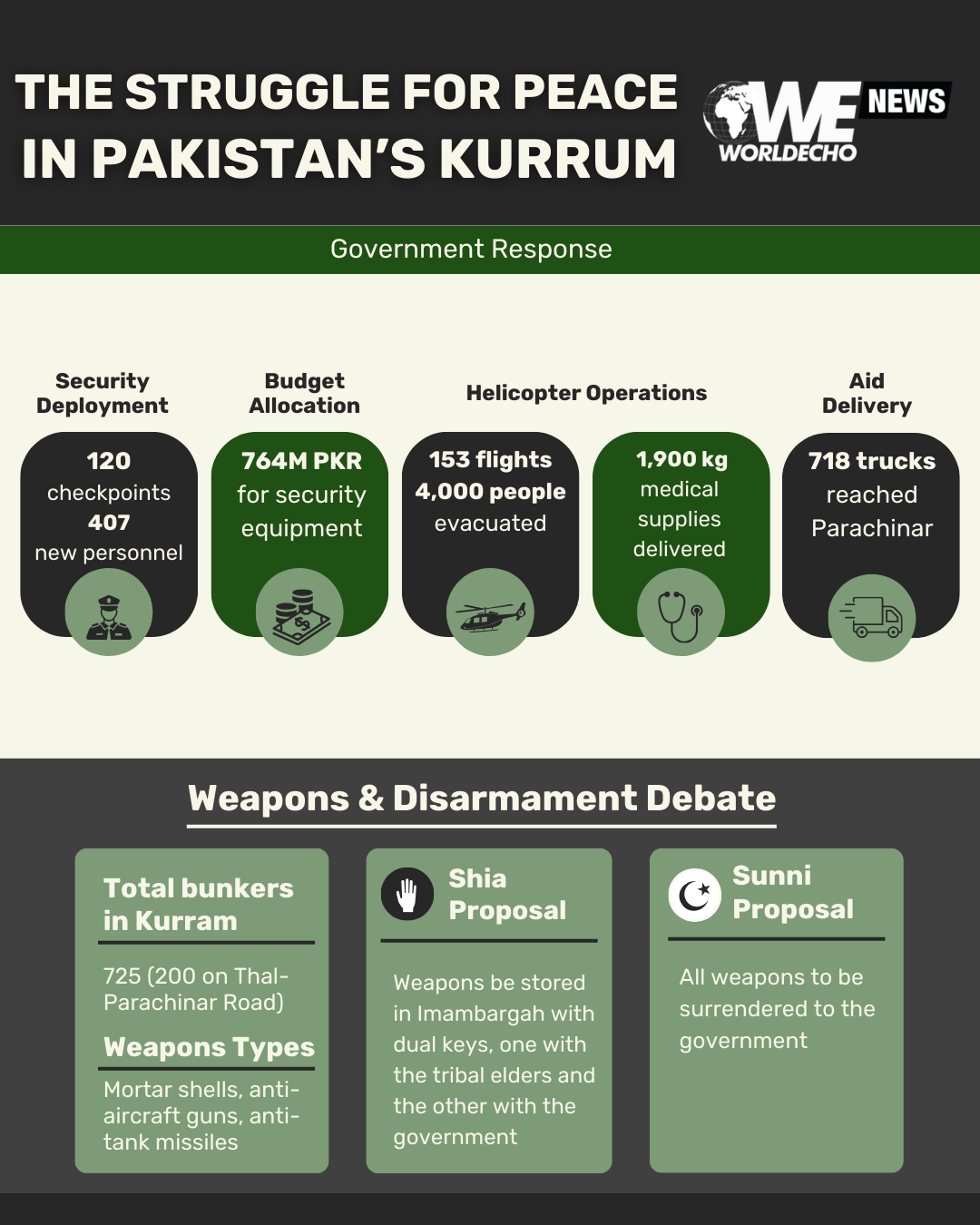
Due to the serious bullet injuries, he was airlifted to Peshawar and admitted to Combined Military Hospital for treatment. Seven others were also injured in the attack.
The January 1 peace agreement, for all practical reasons, was a house of cards, failing to bring about peace in the volatile Kurram region.
According to the Khyber Pakhtunkhwa Home and Tribal Affairs Department, since the signing of the agreement, there have been nine attacks on convoys, security forces, and local administration along the Thal-Parachinar Road, resulting in 27 fatalities.
Taking the bull by the horns
Following a cabinet meeting on February 17, 2025, the Khyber Pakhtunkhwa government released an official statement, noting that Kurram witnessed intense violence in March, May, August, October, and November 2024. Since October 1, 2024, sectarian violence incidents in Kurram claimed 198 lives.
Besides, Thal-Parachinar Road remained closed to public traffic, although 718 trucks carrying food supplies were delivered to Parachinar as per the Kohat Agreement.
In addition, 153 helicopter flights were conducted, delivering 1,900 kilograms of medical supplies and evacuating 4,000 people; and 201 militant bunkers were demolished so far.
The statement added that to secure the Thal-Parachinar Road, 120 security checkpoints would be established with 407 newly-recruited personnel. To meet these objectives, a budget of 764 million rupees was allocated for security equipment.
During a media briefing in late January, Khyber Pakhtunkhwa Governor Faisal Karim Kundi disclosed that there were 725 bunkers in Kurram, with nearly 200 positioned along the Thal-Parachinar Road.
If these bunkers are not demolished, another large-scale attack in Kurram is inevitable,” KP Governor
Kurram: A powder keg of weapons
The long-standing issue of heavy weaponry in Kurram dates back to 1980s, when the district—then one of the seven tribal agencies constituting Federally-Administered Tribal Area (Fata)—served as a major supply route for arms flowing into Afghanistan during the Soviet-Afghan War.
A tribal elder Malik Attaullah Khan—hailing from Sunni-dominated Sadda town of Kurram district and one of the many tribal elders of Kurram who signed the Murree Agreement in 2008 following sectarian clashes in Kurram—contends that Kurram did not turn into an arms depot overnight.
“This has a long history. In 1980s, when the Soviet-Afghan war was raging, Kurram was a key transit point for arms being funnelled into Afghanistan. Weapons were stockpiled here and then transported across the border.”
This is how, he explains, Kurram became a hub for weapons. “Both factions are armed to teeth, possessing a large arsenal of small and heavy weapons, including mortar shells and even anti-tank missiles.”
Disarmament: A hard nut to crack
Under Clause 5 of the Kohat Agreement, a strategy for disarmament was to be finalised. However, the Shia and Sunni factions remain at loggerheads on how to proceed.
A highly-placed Kohat administration official tells WENews English that the Shia community insists on not handing over their weapons to the government. Instead, they propose to surrender their weapons to their own tribal elders.
The Sunni community, on the contrary, supports the government’s stance and wants all weapons to be collected at a designated site.
Eyewitnesses told WENews English that heavy weapons—including AK-47 assault rifles, anti-aircraft guns, mortar shells—were used with reckless abandon in the clashes from both sides.
Parachinar-based Shia leader Shabbir Sajidi, a signatory to the recent peace agreement, defends his community’s stance, arguing, “We will never hand over our weapons to the government. If the State cannot protect our convoys coming from Thal, if it cannot prevent attacks on FC and the army, how can we trust it to protect us?” If we disarm ourselves and another attack happens, we will be sitting ducks, he warns.
“We propose that, since Daesh (ISIS) operates on the Afghan side besides Taliban attack us from the mountains, we will store our weapons in a local Imambargah or another designated community site,” he says. The designated place would have two keys—one with the government and the other with our tribal elders.
“If we are attacked again, we will retrieve our weapons for self-defence. However, we guarantee that these weapons will never be used against [non-combatant] Sunnis.”
On the other hand, a Sadda-based Sunni signatory to the January agreement,
We have told the government to designate a single location where both parties will surrender their weapons.” Dr. Abdul Qadir Orakzai,
After the deadline, he suggests, if anyone refuses to disarm, the government should launch an operation against them. We will not support anyone who refuses to hand over weapons. But, he adds, our only condition is that both Sunnis and Shias must be disarmed equally.
The Shias’ reluctance stems from the fear that, in the event of a future clash, they would not be able to regain weapons, as all domestic and cross-border supply routes are controlled by rival Sunni tribesmen. In contrast, Sunnis have multiple sources and routes, including access through Afghanistan, to replenish arms.
Operation: Walking on thin ice
A Home Department official, who declined to be named, admits that disarmament is the most challenging aspect of the peace process.
For now, the government is treading carefully on disarmament. Our immediate priority is to reopen the Thal-Parachinar Road, which is why the demolition of bunkers is underway,” Home Deptt official.
He claims that both factions have agreed that before weapons are handed over, all bunkers along the highway must be removed. He sees deep mistrust between the two sides as a major obstacle to peace in Kurram, which continues to fuel violence.
Following the February 17 gunfight in Ochat, Chief Minister Ali Amin Gandapur convened a high-level meeting, where officials concluded that local peace committees have failed to curb violence, so now, a strong action will be taken against non-state actors.
Civil administration and police will take the lead, and before any military operation, residents of affected areas will be relocated to safer locations.
Subsequently, on February 18, the district administration, through announcements from the local mosques and pamphlets, asked the residents of Sunni villages of Daad Kamar, Mandori and Bagan to vacate these areas. Subsequently, a search operation was conducted on Thursday.
Kohat Deputy Inspector General of Police Abbas Majeed Marwat, during an exclusive chat with WENews English, said that 18 miscreant and three facilitators were arrested in the search operation.
But a local police officer is not satisfied with the ongoing search operation. Calling a spade a spade, he says that a limited search operation will not serve that purpose. Rather, he insists, a full-scale combing operation—not just confined to Sunni-dominated Lower Kurram but across the whole district—is the only way forward to address the issue.
Meanwhile, the Khyber Pakhtunkhwa government has also announced a Rs. 340 million bounty on four “terrorists involved in Kurram unrest.” They all hail from Sunni towns of Bagan, Watayzai, and Haroon Mela in Kurram.
Nevertheless, it is reliably learnt that the wanted “terrorists” have vanished into thin air and are presently in Afghanistan.










